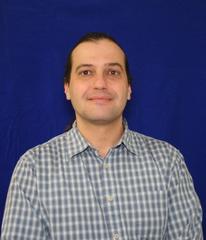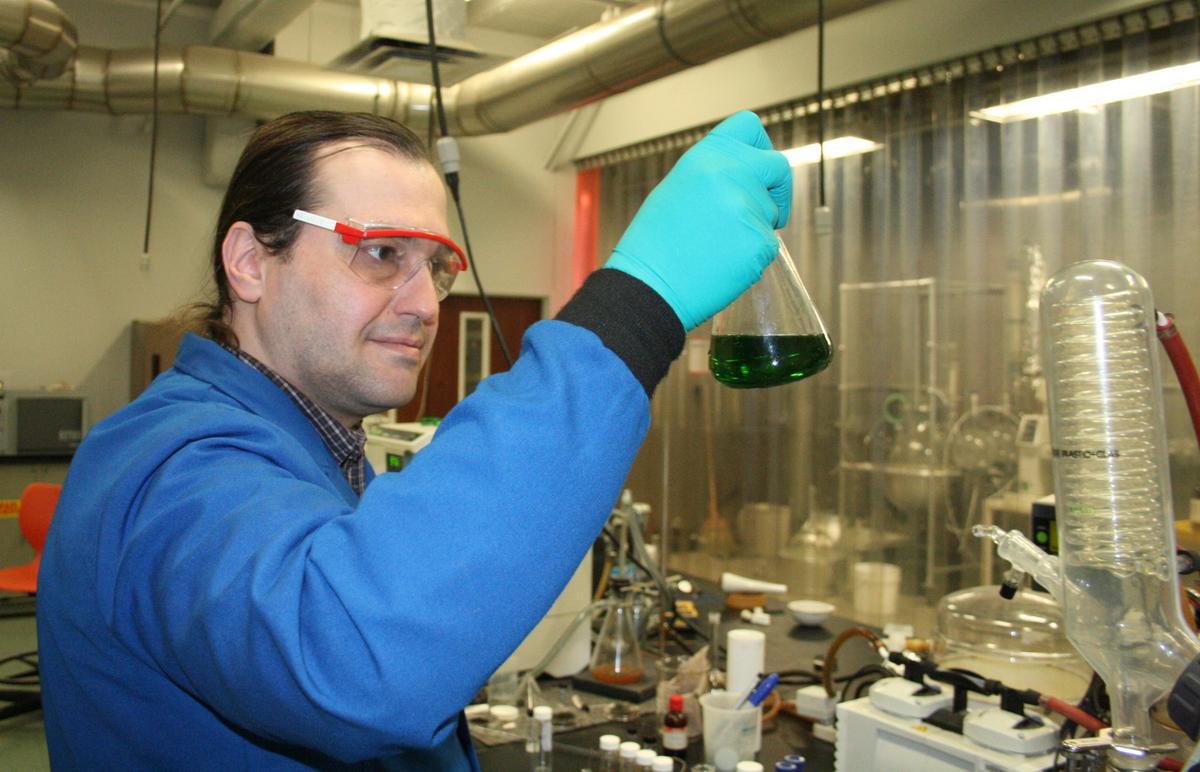It’s not enough to have a doctoral degree from the National Academy of Sciences in Kyiv, Ukraine. It’s not enough to have worked at Ukraine’s internationally respected Institute of Bioorganic Chemistry and Petrochemistry.
To work at NRRI, Alex Kacharov has to remain flexible. Unlike other organic chemists, he often has to switch up his chemical focus and learn new compounds, instrumentation and methods.
“Flexibility is at the same time challenging and interesting,” said Kacharov. “Sometimes the new project starts and you don't know much about the matter, but, with the help of other NRRI team members, you overcome the challenges and build your expertise in a new field.”
Kyiv to Duluth
Coming to NRRI in 2002, Karachov joined a team of other Ukrainian chemists to develop processes to extract valuable chemicals from birch bark. Ancient medicine and modern science have both confirmed the healing powers of the natural chemicals in birch bark.

The team developed a patented process that extracts chemicals from the family of triterpenoids: betulin, betulinic aldehyde, betulinic acid and lupeol. The chemicals are now being marketed world-wide by a company in Two Harbors, Minn., called The Actives Factory.
Karachov is currently focused on developing a lignin-based fertilizer coating to replace synthetic coatings commonly used for slow-release fertilizers. Lignin in trees provides the structural rigidity to the plant’s cell walls. It’s a complex polymer that Kacharov and his colleagues are modifying to create environmentally friendly coatings that can reduce agricultural nutrient leaching and runoff.
“Our group has made significant progress on this matter,” he added. “We are looking forward to seeing the future application of our methods in real life – on fields and in greenhouses.”
He has also been working for several years with one of the biggest U.S. solar panel producers to better understand their laminate plastic materials. Kacharov has analyzed hundreds of samples for Heliene, Inc., and the company is now looking to expand its research relationship with NRRI.
Team Effort
Kacharov credits the team approach in his lab and throughout NRRI to moving these projects forward. For example, they onboarded equipment to measure gas adsorption on a variety of materials, which they now use to evaluate the adsorptive properties of biochar and other porous structures.
“We collectively work on acquiring and working up the data, and help each other in using new instruments,” he said. “It makes our chemistry team more resilient and responsive to new projects.”
Kacharov also enjoys paying it forward. He helped a UMD Chemical Engineering student get data for a material they were developing to publish in a journal.
He also appreciates the research support in purchasing needed chemicals and supplies, and the NRRI Safety Team, which is regularly tapped and critically important to Chemistry Lab operations.
Off Hours
Kacharov and his family enjoy weekends at their cabin in Cotton, Minn. He’s an avid kayaker and enjoys exploring Minnesota’s many water bodies.
“My favorites are the Fish Lake Reservoir and the St. Louis River Estuary,” said Kacharov. “I also enjoy hiking, fishing, biking and snowshoeing.”
